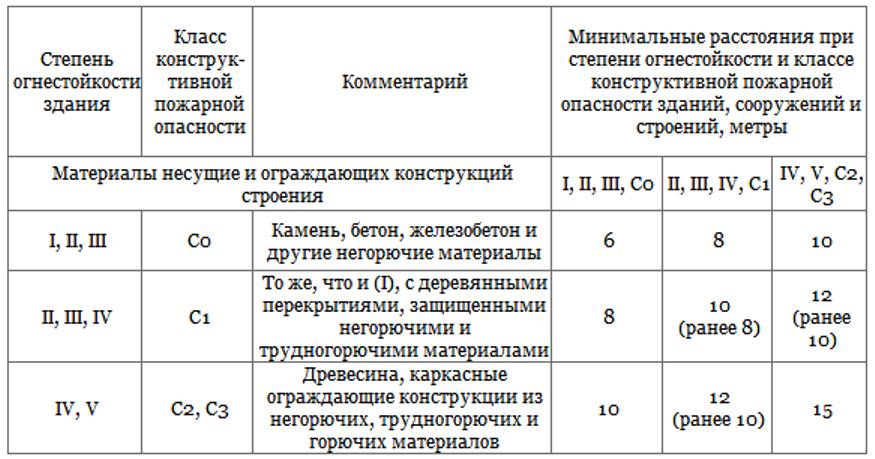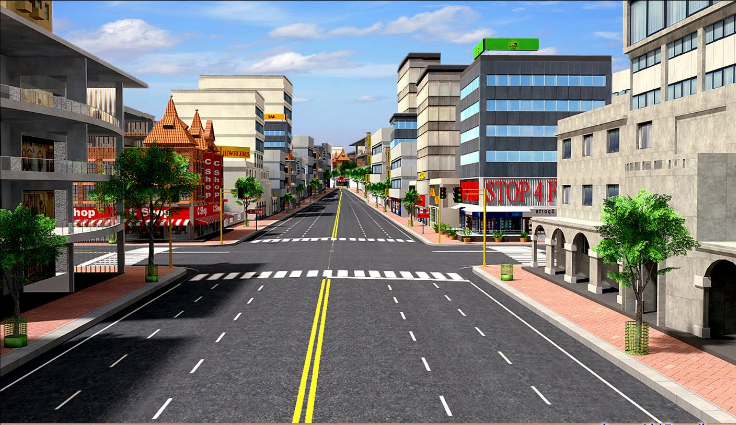Norms of modern fire passage
Creation of convenient fire passages is an integral part of the modern improvement of any territory. Such roads should provide free maneuver for fire fighting equipment and be safe.
Often, fire brigades are faced with a complete lack of emergency driveways, driveways, and parking spaces. It happens that already equipped platforms do not withstand the load regulated by the rules. Moreover, one of the obstacles is modern lawn grids, due to which fire paths do not have the necessary bearing capacity.
The destroyed track and vehicles left unattended also hinder the timely arrival of fire brigades at the scene of the tragedy, which undoubtedly hinders the rescue of people, the effective and prompt elimination of the fire.
Construction regulations
From the beginning of any construction, the issues of ensuring rational fire safety should be in the foreground. It is reasonable to foresee that any fire will be much easier to prevent or eliminate "in the bud" than to eliminate after it has already covered the entire area and nearby buildings. When drawing up a construction plan, the equipment of fire passages and entrances should be taken into account.
Fire passage - the possibility of through penetration of specialized fire fighting equipment through the established territory. Under the entrance is meant the possibility of moving transport directly to the object of ignition.
Both points are designed to provide free access to buildings in the event of a fire. Thus, the necessary conditions are created for immediate intervention and elimination of fire.
Fire passage should be equipped in accordance with SP 42.13330.2011 and Law No. 123-FZ of July 22, 2008. As for the load on fire roads, here it is necessary to be guided by SP 4.13130.2013: clause 8.9.
The above fire safety standards guarantee free access of fire trucks to the building.
Width calculation
It is the width of the passage that primarily affects the ease of use of fire equipment. To date, taking into account the number of storeys of the building, the following fire requirements are provided for the width of the passage:
The question arises: why should different passage widths be set for buildings of different heights? It is much more difficult to extinguish fires in high-rise buildings, moreover, in such situations, the presence of a large number of powerful specialized equipment is necessary, which, of course, obliges to increase the width of fire paths.
Adjacent sidewalks are usually also included in the span of the passage, which does not contradict safety requirements, provided that the footpaths can carry the weight of specialized equipment, which is more than 16 tons per axle. Also, to ensure the free passage of fire vehicles, it is necessary that the height of the passage be at least 4.25 m.
The fire entrance itself must lead freely to the building itself. Given the footage from its nearest edge to the wall, which is similar to a fire passage, it depends on the number of floors: up to 10 - not less than 5 and not more than 8 m; 10 and more - from 8 to 10 m.

The prescribed entrance area should not be blocked by tree plantings and overhead power lines.
Varieties of design
Returning to the fire passage, we can say that its variety - an arch leading to half-closed and closed courtyards, should be more than 3.5 m. Arched fire passages should be equipped every 300 m, and their height cannot be less than 4.25 m.
If there are automatic extinguishing installations, hydrants and other equipment on fire routes, the above standards can be adjusted.
If there is a dead end at the end of the passage, then a platform of 15 x 15 m should be equipped in it for making a U-turn of large vehicles. The maximum length of a dead-end passage is no more than 150 meters.
Fire paths, as well as platforms for transport of operational response services, should be marked, curb access roads should be covered with light-reflecting red paint. It is also necessary to install anti-vandal signal special equipment and road signs.
The slope of the road on the driveways should be at an angle of no more than 6 degrees. Turning radii intended for the movement of specialized vehicles must be 12 m or more.
The turntable needs to be treated with an antiseptic along the entire contour, and also equipped with water inlets to eliminate excess water into the drain holes. Curvilinear curvilinear side stones must be installed in those driveways and turning areas where there are roundings.

The thickness of the above-ground coating, along the entire length of the fire paths, is established by calculating the circumstances of operation and load, taking into account hydrogeological indicators, as well as the materials of the structural layer.
In a number of situations (educational institution, nine-story residential building, hospital, etc.), all buildings must be equipped with an unobstructed fire passage on both sides.
Of course, this complicates the design of construction, especially in urban areas.
Exceptions
In places of historical development, the rules provide for the possibility of saving the parameters of existing passages, without correction. In addition to the above case, the width of the passage may not meet the standards in cases where:
- the fire resistance of the walls of neighboring buildings is adequate to the 1st and 2nd degrees of fire safety, they also cannot have windows - it is allowed to reduce the distance by 20%;
- buildings are located in a zone of high seismic activity, reaching indicators of nine points - it is necessary to increase the width of the passage by 20%;
- one of the buildings has fire resistance from 3rd to 5th degree - expansion by 25% is necessary;
- neighboring buildings have combustible facades and are two-story - the distance is increased by 20%.
The regulations do not indicate the distances between outbuildings, they are assigned a degree of fire resistance in accordance with GOST 30247.
From the implementation of all the above rules, among which the main one is the observance of the footage between buildings, the lives of people and the safety of property depend.
1 , mean: 5.00






